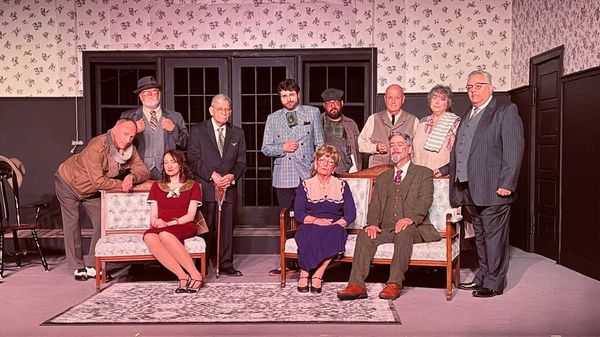September 17, 2011
John Wayne Gacy: Defending a Monster
Steve Weinstein READ TIME: 3 MIN.
In the 1970s, San Amirante had just decided to leave the relative safety, obscurity and humdrum life of a public defender. He put out a shingle, rented a tiny office and became one of thousands of such lawyers in the sprawling City of the Big Shoulders.
Then, one day, he got his first case, which must rank as the most important -- certainly, the weirdest -- first assignment any budding legal eagle ever tackled. John Wayne Gacy: Defending a Monster begins with a bang: Gacy's last murder. This was one of the dozens of young men he had killed over a several-year period.
Unfortunately for him, but fortunately for everyone else, Gacy finally picked the wrong victim. It's not that his other victims didn't have loved ones who tried to pick up the pieces of their own mystery: One spent $5,000 (in '70s money) to hire a private detective.
It's just that nothing came of it. In this case, however, the family lived in a prosperous suburb and immediately pressed the police to investigate. They were soon enough led to Gacy's Northwest Chicago home.
The next chapters become a fascinating and increasingly horrifying cat-and-mouse game. The police tailed Gacy, who idiotically tried to buddy up to them. They couldn't find anything, but they became more and more suspicious that they were onto something.
When they finally discovered the first of the bits of corpses hidden in the crawl space of Gacy's home, it made front-page headlines around the world. As the facts spilled out -- many of them provided by Gacy in a sort of semi-catatonic trance, as relayed by the author -- it became more and more obvious that they were dealing with a calculating monster.
Amirante has a breezy writing style that skirts the edges of master pulp-fiction detective writers like Dashiel Hammett and James M. Cain (although those English-language masters would never have said "the man that" instead of "who," which Amirante always does). The book has some similarity to another famous work by a lawyer in a similar celebrated case.
But L.A. Prosecutor Vincent Bugliosi's "Helter Skelter" is a contemporary masterpiece that can stand alongside such true-crime classics as Truman Capote's "In Cold Blood." Amirante isn't in the same class -- although his crime certainly outdoes any other in terms of sheer, brutal cruelty.
Amirante speaks a great deal about Gacy's sexual confusion. Gacy's life and mental condition are Exhibit A for the argument for societal acceptance of varied sexualities and the therapeutic effects of coming out. He remains non-judgemental about the gay stuff (although I did wonder if he was as accepting 30 years ago).
Where Amirante finally goes off the rails in his cross-examination of a woman he describes as so breathtakingly beautiful that the entire courtroom is mesmerized. Amirante is proud of the fact that he exposed this person, who was the roommate of one of Gacy's victims, as mid-op transsexual and dismisses her as a sad, confused person.
People like me who have a morbid fascination with the lowest depths of the human condition will continue to be drawn to stories like Gacy's. I make no brief for my interest, except that I believe that these monsters represent the monster that lies under the surface of all us. The political philosopher Thomas Hobbes argued that government was necessary to reign in the brutishness inherent in the human condition. Stories like Gacy's point to what happens when the reigns are loosed.
As for Amirante's retelling, it will hold interest. But for a fuller, even chillier account, check out "Killer Clown: the John Wayne Gacy Murders," written by Terry Sullivan and Peter T. Maiken.
Steve Weinstein has been a regular correspondent for the International Herald Tribune, the Advocate, the Village Voice and Out. He has been covering the AIDS crisis since the early '80s, when he began his career. He is the author of "The Q Guide to Fire Island" (Alyson, 2007).




